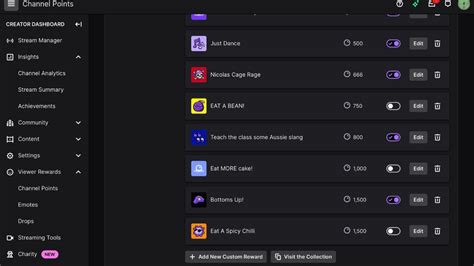Datadevelop
Author: u | 2025-04-24

The latest Tweets from DataDevelop (@datadevelop). Solution for Profits, Satisfaction by Results !. Hong Kong

DataDevelop and AnyLogic Strategic Partnership
This section provides a guide to developing notebooks and jobs in Databricks using the Python language, including tutorials for common workflows and tasks, and links to APIs, libraries, and tools.To get started:Import code: Either import your own code from files or Git repos or try a tutorial listed below. Databricks recommends learning using interactive Databricks Notebooks.Run your code on a cluster: Either create a cluster of your own, or ensure you have permissions to use a shared cluster. Attach your notebook to the cluster, and run the notebook.Then you can:Work with larger data sets using Apache SparkAdd visualizationsAutomate your workload as a jobUse machine learning to analyze your dataDevelop in IDEsTutorialsThe below tutorials provide example code and notebooks to learn about common workflows. See Import a notebook for instructions on importing notebook examples into your workspace.Data engineeringTutorial: Load and transform data using Apache Spark DataFrames provides a walkthrough to help you learn about Apache Spark DataFrames for data preparation and analytics.Tutorial: Delta Lake.Tutorial: Run your first DLT pipeline.Data science and machine learningGetting started with Apache Spark DataFrames for data preparation and analytics: Tutorial: Load and transform data using Apache Spark DataFramesTutorial: End-to-end ML models on Databricks. For additional examples, see Tutorials: Get started with AI and machine learning.AutoML lets you get started quickly with developing machine learning models on your own datasets. Its glass-box approach generates notebooks with the complete machine learning workflow, which you may clone, modify, and rerun.Manage model lifecycle in Unity CatalogTutorial: End-to-end ML models on DatabricksDebug in Python notebooksThe example notebook illustrates how to use the Python debugger (pdb) in Databricks notebooks. To use the Python debugger, you must be running Databricks Runtime 11.3 LTS or above.With Databricks Runtime 12.2 LTS and above, you can use variable explorer to track the current value of Python variables in the notebook UI. You can use variable explorer to observe the values of Python variables as you step through breakpoints.Python debugger example notebooknotebreakpoint() is not supported in IPython and thus does not work in Databricks notebooks. You can use import pdb; pdb.set_trace() instead of breakpoint().Python APIsPython code that runs outside of Databricks can generally run within Databricks, and vice versa. If you have existing code, just import it into Databricks to get started. See Manage code with notebooks and Databricks Git folders below for details.Databricks can run both single-machine and distributed Python workloads. For single-machine computing, you can use. The latest Tweets from DataDevelop (@datadevelop). Solution for Profits, Satisfaction by Results !. Hong Kong DataDevelop and SmartChain team up in strategic alliance - SmartChain International LLP and DataDevelop Consulting Ltd. are delighted to announce Download DataDevelop Description. DataDevelop is an application for managing multiple databases (including SQL Server, MySQL, SQLite, MS Access), extensible and includes a Eventbrite - DataDevelop Consulting Ltd. presents DataDevelop Prize HK : 2025 Student Case Competition team registration - Saturday, at Hong Kong Science Park GitHub is where Datadevelop builds software. Eventbrite - DataDevelop Consulting Ltd. presents DataDevelop Prize : Sustainable Innovation for 'Made in Hong Kong' products - Saturday, at Inno2, Multi-function Room 1-3 🚀 Relive the Highlights of DataDevelop Prize HK 2025! 🌱🏭 What an incredible journey! 🎉 The DataDevelop Prize HK 2025 Student Case Competition brought DataDevelop 0.11 Beta download - Přehledn spr va datab z typu SQL Server, MySQL, SQLite a MS Access. DataDevelop je aplikace pro přehlednou spr vuComments
This section provides a guide to developing notebooks and jobs in Databricks using the Python language, including tutorials for common workflows and tasks, and links to APIs, libraries, and tools.To get started:Import code: Either import your own code from files or Git repos or try a tutorial listed below. Databricks recommends learning using interactive Databricks Notebooks.Run your code on a cluster: Either create a cluster of your own, or ensure you have permissions to use a shared cluster. Attach your notebook to the cluster, and run the notebook.Then you can:Work with larger data sets using Apache SparkAdd visualizationsAutomate your workload as a jobUse machine learning to analyze your dataDevelop in IDEsTutorialsThe below tutorials provide example code and notebooks to learn about common workflows. See Import a notebook for instructions on importing notebook examples into your workspace.Data engineeringTutorial: Load and transform data using Apache Spark DataFrames provides a walkthrough to help you learn about Apache Spark DataFrames for data preparation and analytics.Tutorial: Delta Lake.Tutorial: Run your first DLT pipeline.Data science and machine learningGetting started with Apache Spark DataFrames for data preparation and analytics: Tutorial: Load and transform data using Apache Spark DataFramesTutorial: End-to-end ML models on Databricks. For additional examples, see Tutorials: Get started with AI and machine learning.AutoML lets you get started quickly with developing machine learning models on your own datasets. Its glass-box approach generates notebooks with the complete machine learning workflow, which you may clone, modify, and rerun.Manage model lifecycle in Unity CatalogTutorial: End-to-end ML models on DatabricksDebug in Python notebooksThe example notebook illustrates how to use the Python debugger (pdb) in Databricks notebooks. To use the Python debugger, you must be running Databricks Runtime 11.3 LTS or above.With Databricks Runtime 12.2 LTS and above, you can use variable explorer to track the current value of Python variables in the notebook UI. You can use variable explorer to observe the values of Python variables as you step through breakpoints.Python debugger example notebooknotebreakpoint() is not supported in IPython and thus does not work in Databricks notebooks. You can use import pdb; pdb.set_trace() instead of breakpoint().Python APIsPython code that runs outside of Databricks can generally run within Databricks, and vice versa. If you have existing code, just import it into Databricks to get started. See Manage code with notebooks and Databricks Git folders below for details.Databricks can run both single-machine and distributed Python workloads. For single-machine computing, you can use
2025-04-08